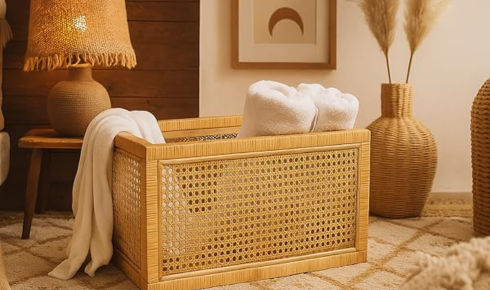Cane has always been valued for its strength, flexibility, and natural elegance, making it a preferred material for furniture, décor, and crafts. Among the most popular applications of this versatile material are cane webbing and cane mesh, which are widely used in furniture making, interior design, and creative projects. Their intricate patterns, durability, and aesthetic appeal make them essential for both traditional and contemporary designs.
Cane webbing refers to the woven strips of cane used primarily in furniture. It is commonly seen in chair backs, seats, and cabinet panels, providing both support and style. The weaving process involves carefully interlacing thin cane strips into geometric patterns, resulting in a surface that is strong, flexible, and breathable. This technique not only adds structural integrity to furniture but also enhances its visual charm, giving each piece a handcrafted, artisanal feel.
Cane mesh, on the other hand, is a slightly different form of woven cane that offers even more versatility. It is often used for decorative panels, room dividers, wall accents, and cabinetry inserts. cane mesh is lightweight, durable, and allows air to flow freely through the material, making it perfect for furniture that needs both support and ventilation. Designers love cane mesh because it can be adapted to a variety of shapes and sizes, and it pairs beautifully with wood, metal, or glass elements.
One of the biggest advantages of using cane webbing and mesh is their eco-friendly nature. Cane is a renewable resource that grows quickly, making it an environmentally responsible choice compared to synthetic alternatives. Opting for cane products contributes to sustainable living while supporting traditional craftsmanship. Many manufacturers follow ethical harvesting practices to ensure the longevity of cane plantations, making cane webbing and mesh a truly green solution for modern interiors.
Cane webbing and mesh are also incredibly versatile in terms of design. They can be used in contemporary minimalist interiors as well as in rustic, tropical, or bohemian-inspired spaces. Cane’s natural hues—from light beige to rich golden brown—blend seamlessly with a wide range of color schemes. Whether used in a classic chair or a modern cabinet, cane webbing adds texture, warmth, and elegance to any room.
Maintenance of cane webbing and mesh is straightforward. Regular dusting and occasional cleaning with a soft damp cloth help preserve its natural beauty. Avoiding excessive moisture and direct sunlight ensures that the material retains its shape and strength over time. With proper care, furniture or panels made from cane webbing and mesh can last for decades, maintaining both functionality and aesthetic appeal.
In addition to home furniture, cane webbing and mesh are widely used in commercial spaces such as restaurants, hotels, and offices. Their lightweight yet durable nature makes them ideal for high-traffic areas. They also offer a sophisticated, natural aesthetic that enhances interior décor without overwhelming the space. Moreover, cane mesh can be used creatively in crafts, lighting fixtures, and storage solutions, offering limitless possibilities for designers and DIY enthusiasts.
In conclusion, cane webbing and cane mesh are more than just materials—they represent a combination of durability, style, and sustainability. Whether you’re furnishing a home, designing a commercial space, or creating custom décor, these cane products provide a timeless elegance that is hard to replicate with other materials. By incorporating cane webbing and mesh into your interiors, you can enjoy functional, eco-friendly, and visually appealing solutions that stand the test of time.




